When you load the roof, the centre of gravity of the vehicle rises and the usual driving characteristics as well as the steering and braking characteristics change. During cornering, the vehicle tilts more strongly and may react more sluggishly to steering movements.
If you exceed the maximum roof load, the driving characteristics, as well as the steering and braking characteristics, will be greatly impaired.
The panoramic sliding sunroof may be damaged by the roof rack if you attempt to open it when the roof rack is fitted.
In order to allow ventilation of the vehicle interior, you can raise the panoramic sliding sunroof.
When you adjust a seat, you may trap yourself or a vehicle occupant.
The seat or seat backrest which is not engaged will then push the vehicle occupant against the seat belt. The seat belt would not be able to provide the intended protection and could cause additional injury.
A child restraint system will then no longer be supported correctly or positioned correctly and will no longer perform its intended function.
The seat backrest cannot restrain objects or goods in the luggage compartment.
before passengers travel on a seat with the EASY-ENTRY/EXIT feature
after adjusting the seat
after the EASY-ENTRY/EXIT feature is used
after the load compartment enlargement has been folded down.
Always ensure that all vehicle occupants have their seat belts fastened correctly and are sitting properly. Particular attention must be paid to children.
If you no longer require the folded-down seat backrest as a loading area, fold the backrest back into place.
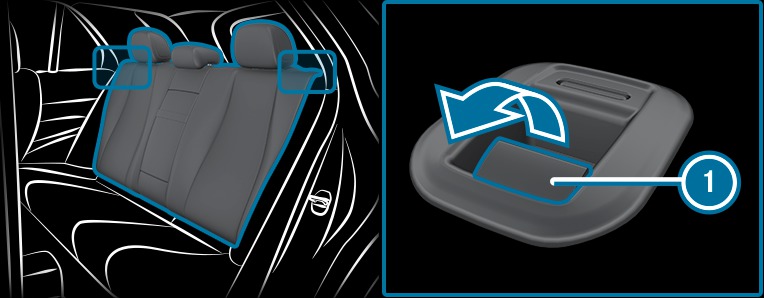
 .
. 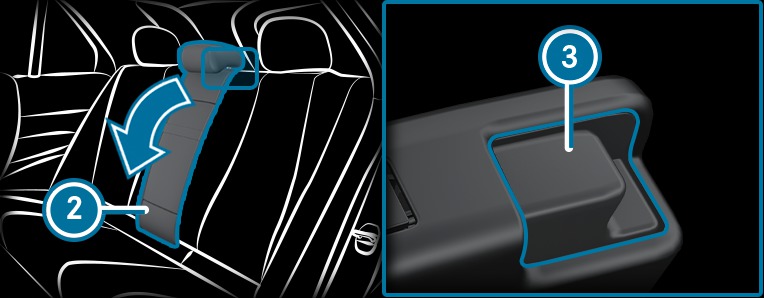
 of the seat backrest.
of the seat backrest.  forwards.
forwards. 7-seat vehicles: when the centre seat backrest is in the loading floor position, the left seat backrest cannot be folded forwards.
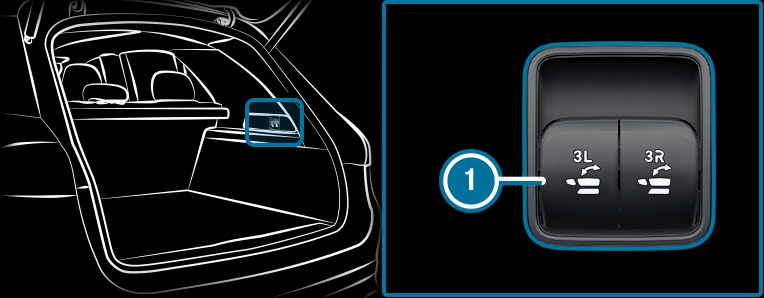
 to fold the left or right seat backrest forwards.
to fold the left or right seat backrest forwards. The head restraint of the seat backrest moves into a suitable position and the seat folds forwards. The middle seat backrest folds forwards together with the left seat backrest.
If a seat backrest in the second row of seats is not engaged and locked, this will be shown on the multifunction display on the instrument cluster.
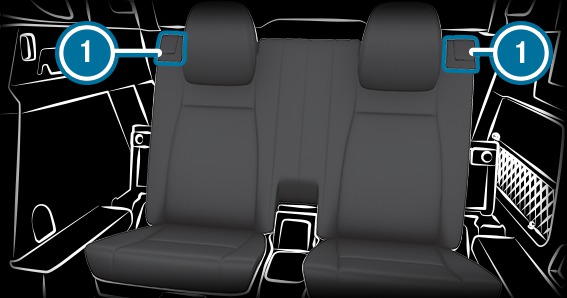
 of the seat backrest.
of the seat backrest. When you adjust a seat, you may trap yourself or a vehicle occupant.
If the rear bench seat/rear seat and seat backrest are not engaged they could fold forwards, e.g. when braking suddenly or in the event of an accident.
If this is the case, the vehicle occupant would be forced into the seat belt by the rear bench seat/rear seat or by the seat backrest. The seat belt cannot protect as intended and could result in additional injury.
Objects or loads in the boot/load compartment cannot be restrained by the seat backrest.
The seat belt could become trapped and thus damaged when folding back the seat backrest.
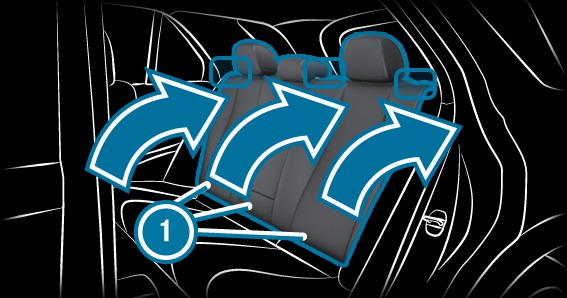
 back until it engages.
back until it engages. If a seat backrest is not engaged and locked, this will also be shown on the multifunction display on the instrument cluster.

 to fold the left or right seat backrest backwards.
to fold the left or right seat backrest backwards. The seat folds backwards. The middle seat backrest folds backwards together with the left seat backrest.
If you drive when the load compartment floor is open, objects could be thrown around and thereby strike vehicle occupants. There is a risk of injury, particularly in the event of sudden braking or a sudden change in direction.

 upwards.
upwards.  .
.  .
.  and fasten it to the bracket on the underside of the load compartment floor.
and fasten it to the bracket on the underside of the load compartment floor.  down until it engages.
down until it engages. If the ball neck is not engaged, the trailer may come loose.
The fully-electric trailer hitch could be mechanically damaged by applying additional pressure when the ball neck is being extended or retracted.
Shift the transmission to position
 or
or  .
. The range of movement is clear.
Only when retracting: remove the trailer cables or adapter plugs.
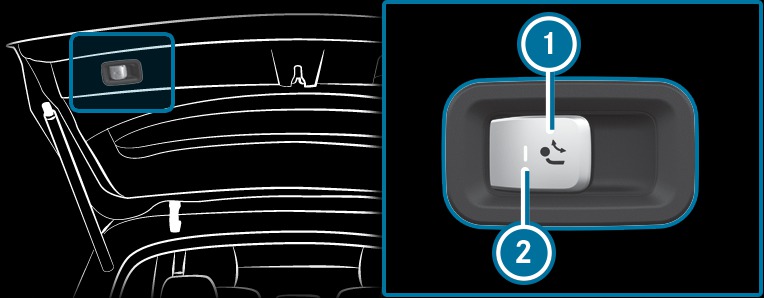
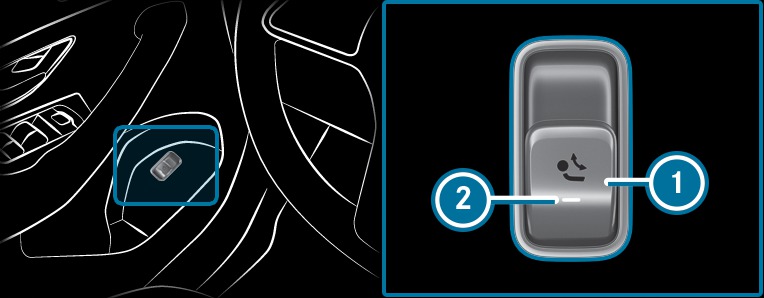
 .
. Indicator lamp  will flash and the Trailer coupling extending… display message will appear on the multifunction display.
will flash and the Trailer coupling extending… display message will appear on the multifunction display.
The ball neck will extend fully electrically.
The ball neck is securely locked in place when indicator lamp  lights up continuously.
lights up continuously.
If the ball neck is not securely locked in place, indicator lamp  will flash and the Check trailer hitch lock display message will appear on the multifunction display.
will flash and the Check trailer hitch lock display message will appear on the multifunction display.
 .
. Indicator lamp  will flash and the Trailer coupling extending… display message will appear on the multifunction display.
will flash and the Trailer coupling extending… display message will appear on the multifunction display.
The ball neck will retract fully electrically.
The ball neck is securely locked into place once indicator lamp  goes out.
goes out.
If the ball neck is not securely locked in place, indicator lamp  will flash and the Check trailer hitch lock display message will appear on the multifunction display.
will flash and the Check trailer hitch lock display message will appear on the multifunction display.
Warning and indicator lamps More
Display messages
Observe the notes on loading the vehicle More.
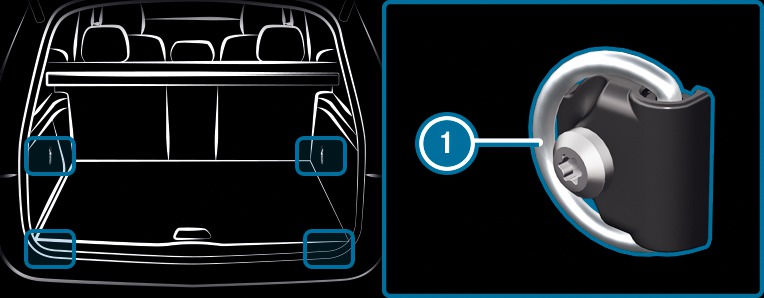

If objects in the vehicle interior are stowed incorrectly, they can slide or be thrown around and hit vehicle occupants. In addition, cup holders, open stowage spaces and mobile phone receptacles cannot always retain all objects they contain.
There is a risk of injury, particularly in the event of sudden braking or a sudden change in direction.
Observe the notes on loading the vehicle.
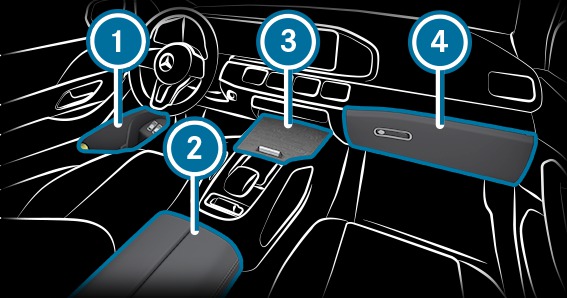




If objects in the vehicle interior are stowed incorrectly, they can slide or be thrown around and hit vehicle occupants. In addition, cup holders, open stowage spaces and mobile phone receptacles cannot always retain all objects they contain.
There is a risk of injury, particularly in the event of sudden braking or a sudden change in direction.
Observe the notes on loading the vehicle.
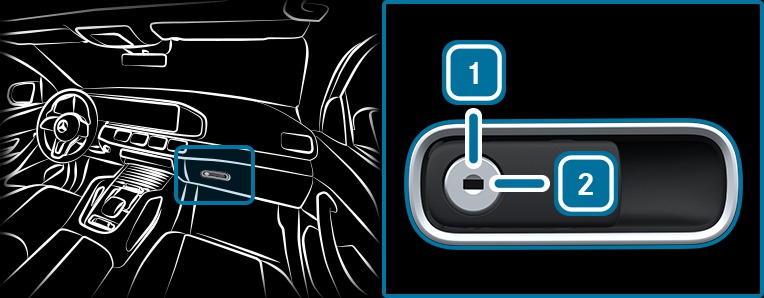
 (to lock) or anti-clockwise
(to lock) or anti-clockwise  (to unlock).
(to unlock). 
